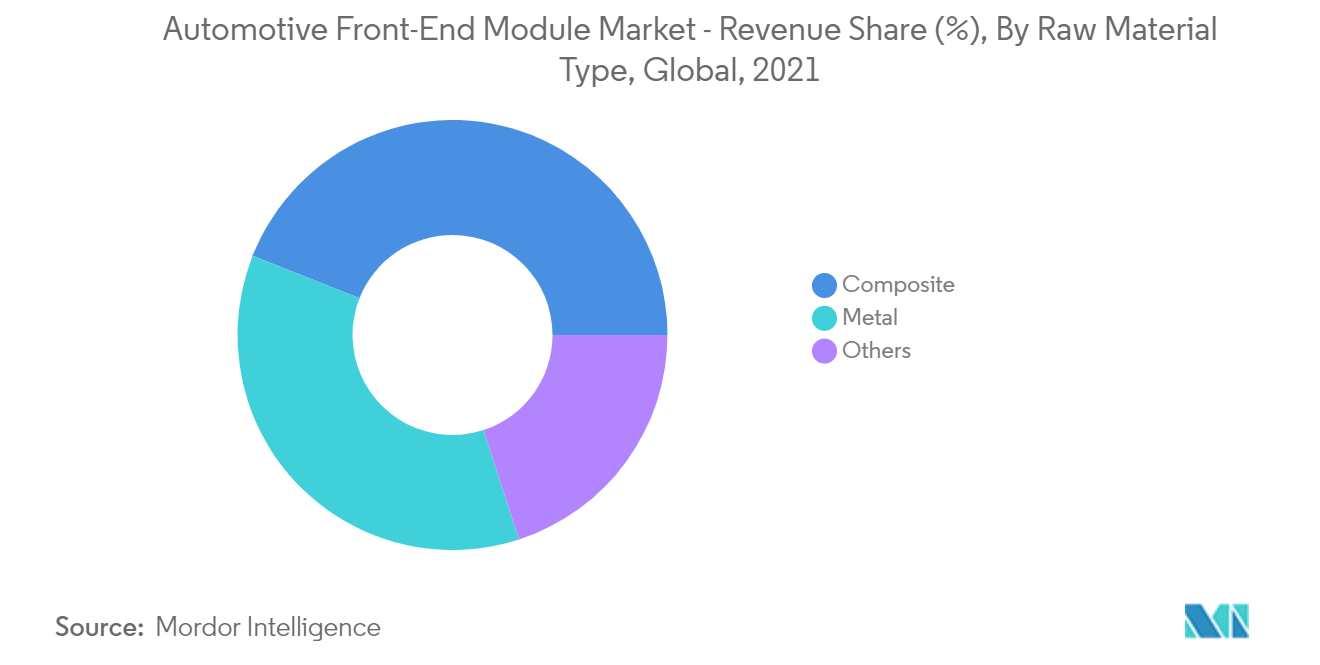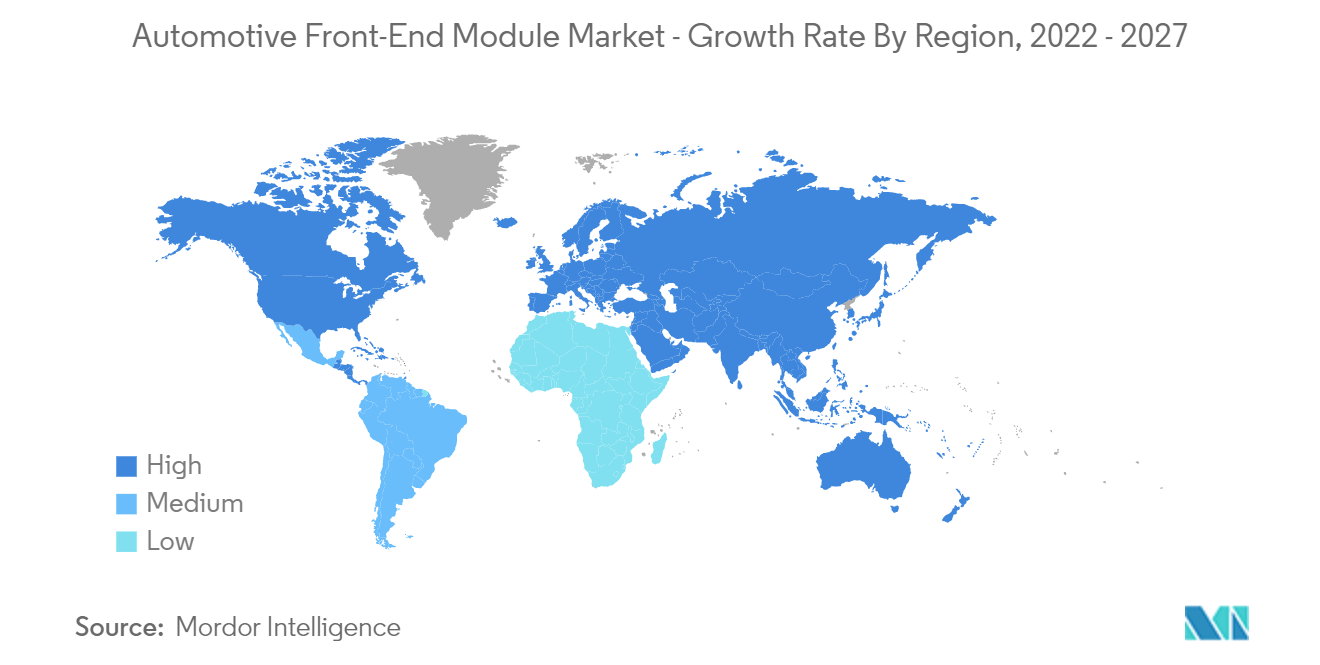Market Trends of Automotive Front End Module Industry
This section covers the major market trends shaping the Automotive Front End Module Market according to our research experts:
Increasing Demand for Lightweight Automotive Front-End Modules
The growing demand for lightweight vehicles is also the driving force for the automotive front-end module (FEM) market. As lightweight auto parts reduce the overall weight of the vehicles, they can, in turn, reduce CO2 emissions and cost. So, as several governments across the globe have introduced stringent emission and fuel economy regulations such as corporate average fuel economy (CAFÉ), BS-VI norms, etc. such regulations are likely to encourage automotive OEMs to increase the usage of lightweight materials such as lightweight metals, composites, and plastics. Experimenting with front-end module materials in auto parts has predominately contributed to achieving 20%-30% of vehicle weight reduction.
Nowadays instead of heavy steel and iron carriers, lightweight components are used which are responsible for fuel efficiency and vehicle performance enhancement. Commonly used materials for lightweight thermoplastics are polypropylene and nylon. For instance,
- In July 2020, a highly integrated bolster produced with a 'hybrid' plastic-metal composite technology for the Ford Kuga SUV, is produced with steel panels and Durethan BKV30H2.0EF, an easy-flowing, fiberglass-reinforced nylon 6 from Lanxess, Pittsburgh, Penn. The bolster and the fully assembled front-end module were developed and are produced by Germany's Montaplast GmbH, a global system supplier of the automotive industry.
Hybrid composite/metal designs are preferably used for heavy-end vehicles. Environmental regulations for green initiatives and the digital lifestyle of consumers is also playing a vital part in increasing demand for lightweight vehicles and in turn the demand for composite/ hybrid front-end module (FEM). For example,
- In April 2021, Webasto announced that, at Auto Shanghai, it is presenting a concept vehicle as a vision of the mobility of the future. The concept car brings together numerous technical solutions for autonomous driving, electrification and comfort: roof sensor module with a working lidar and working camera, a large openable panorama roof, a smart lightweight front-end module, a battery and charging solution, and an integrated thermal management system.
Currently, several vehicles are launched in the market with front-end modules made of composite materials. The recently launched Hyundai and two small segment cars from Mercedes use a lightweight front-end construction that allows for the integration of additional functionality in components, which in turn saves assembly time, reduces costs, and lowers mass. Carriers for all three vehicles make use of injection-molded pelletized LFT-PP. For instance,
- In February 2020, Geely Philippines introduced its very own gasoline-electric hybrid technology into its upcoming compact SUV, which will pair with a 1.5-liter turbo-charged gasoline engine, complemented by a 48-volt belt-starter generator (BSG) integrated in the Front-End Accessory Drive (FEAD) of the engine, a 48-volt to 12 DC/DC converter, a 48-volt lithium-ion battery module and battery management system (BMS), along with a recuperation braking system and a hybrid module control system.
Considering such developments and technologies in the market, the trend of light weight components in vehicles anticipated to push manufacturers to offer innovative solutions for their customers. Owing to such trends , the market expected to grow at decent rate during the forecast period.

Asia-Pacific Region Expected to Witness Significant Growth in the Market
The Asia-Pacific region is expected to dominate the automotive front-end module market -owing to the strong presence of key front-end module manufacturers in Japan, South Korea, China, and India. The demand in the market is further supported by growing vehicle production across key countries in the region coupled with the growing focus of various automotive OEMs to produce lightweight vehicles. For instance,
- According to CAAM, the China Association of Automobile Manufacturers (CAAM) stated that in July 2022, the PMI of the automobile industry was higher than 52.0%, which was better than that of the overall manufacturing industry. Overall vehicle production and sales in July totaled 2.455 million units and 2.42 million units, representing a 31.5% and 29.7% y/y increase, respectively. Passenger vehicle production reached 2.21 million units, up 42.6% y/y, while sales were 2.174 million units, up 40.0% y/y. Passenger vehicle production for the January to July period totaled 12.645 million units, up 10.9% y/y, while sales were 12.529 million units, up 8.3% y/y.
- According to SIAM, total Passenger Vehicle Sales in India increased from 2,711,457 to 3,069,499 units and during the same period 113,265 units of Vans were sold compared to 108,841 units in April 2020 to March 2021 indicating positive trends in the market.
Apart from China and India South Korea, Japan are also gaining the importance owing to the presence of big players of automobile industry like Nissan. This region is expected to show strong double digit CAGR for the automotive front end module (FEM) market. Further, demand in the market expected to be supported by key players expansion strategy, production facilities expansion, etc. For instance,
- In March 2022, the first ever Malaysia-assembled CKD unit of Porsche Cayenne has rolled off the production line at Sime Darby's assembly plant in Kulim, Kedah, the first assembly facility for Porsche outside of Europe. The base Cayenne is currently the only model being produced locally in CKD form. Six key modules sourced locally include center console and cockpit (Clarion), front and rear axles (ZF), and the front-end module assembly.
Such developments, anticipated to create positive outlook for the market during the forecast period.

